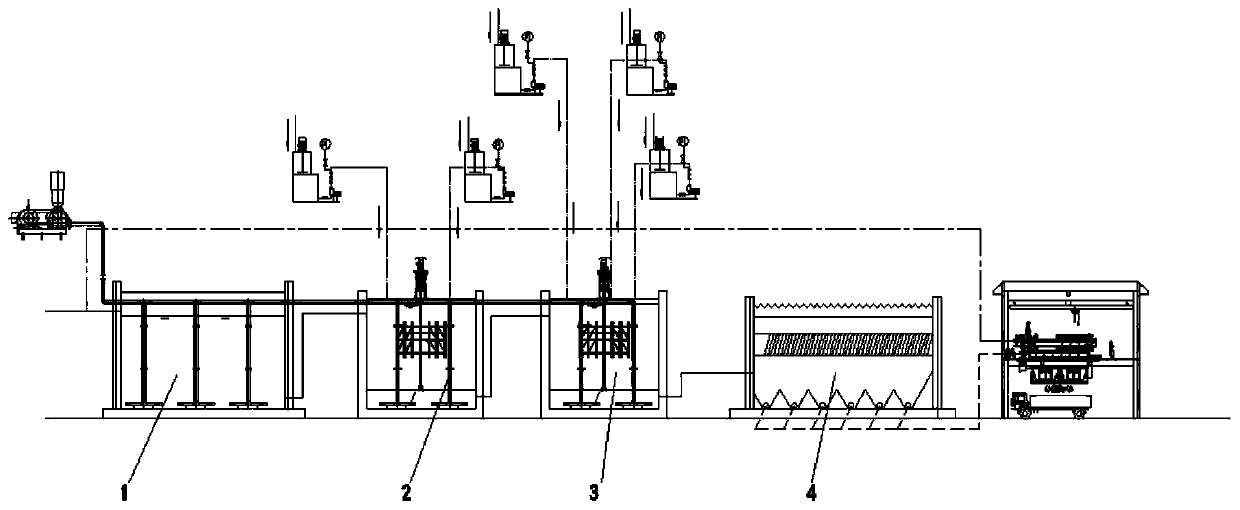Method for treating leachate wastewater of arsenic-containing waste residue landfills and waste mines
A treatment method and leachate technology, applied in mining wastewater treatment, filtration treatment, water/sewage treatment, etc., can solve the problems of a wide variety of chemicals, lengthy treatment process, long reaction time, etc., to achieve a wide range of applications, process flow Simple, low-cost effects
- Summary
- Abstract
- Description
- Claims
- Application Information
AI Technical Summary
Problems solved by technology
Method used
Image
Examples
Embodiment Construction
[0025] The following will clearly and completely describe the technical solutions in the embodiments of the present invention with reference to the accompanying drawings in the embodiments of the present invention. Obviously, the described embodiments are only some, not all, embodiments of the present invention. Based on the embodiments of the present invention, all other embodiments obtained by persons of ordinary skill in the art without making creative efforts belong to the protection scope of the present invention.
[0026] see figure 1 , in an embodiment of the present invention, a treatment method for arsenic-containing waste residue landfill and abandoned mine leachate wastewater, the method includes the following steps:
[0027] 1) Aeration process: After aerating the collected arsenic-containing leachate wastewater for 1-2 hours, use air to oxidize part of the arsenic (III) to arsenic (V) to reduce the consumption of oxidants in the subsequent process (during the aera...
PUM
 Login to View More
Login to View More Abstract
Description
Claims
Application Information
 Login to View More
Login to View More - R&D
- Intellectual Property
- Life Sciences
- Materials
- Tech Scout
- Unparalleled Data Quality
- Higher Quality Content
- 60% Fewer Hallucinations
Browse by: Latest US Patents, China's latest patents, Technical Efficacy Thesaurus, Application Domain, Technology Topic, Popular Technical Reports.
© 2025 PatSnap. All rights reserved.Legal|Privacy policy|Modern Slavery Act Transparency Statement|Sitemap|About US| Contact US: help@patsnap.com

